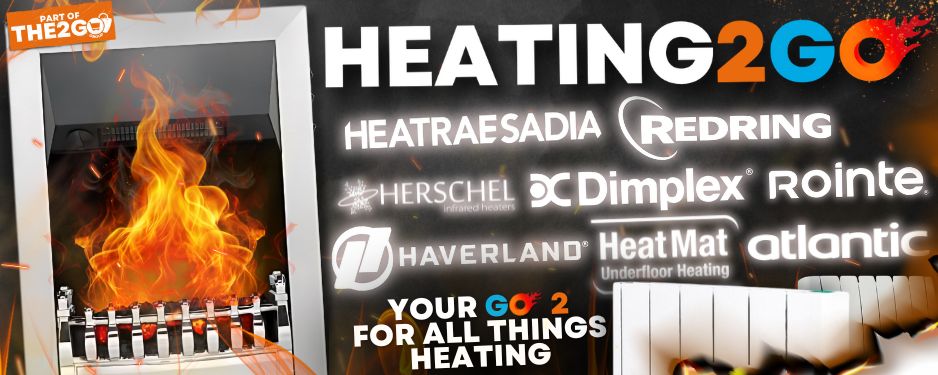Hi, sorry this is so long. I have tried to give all relevant info.
We are building a new, small, two-storey house that is off grid for power.
There are only a few companies that do central heating systems locally, and they are aimed at the very top end of the market. We are at the lower end of the building budget.
A cast-iron woodburning stove will be our main source of heat and hot water as well as the cooker & oven. It has an 8-9 kW water heater/jacket/wetback. We will have solar PV for power and will have an electric element in the water tank that is used when the woodburner is not running on very sunny warm days, and an induction hob and microwave for cooking on those days.
At this stage, the proposed 500 L hot water tank will have a vented coil, providing the heat to the tank, from the wetback in the woodstove. It will also have a coil to supply the heating water system. Potable hot water supplies to the kitchen/bathroom will be from the tank itself.
We are planning to have two underfloor heating coils in the insulated ground floor slab (one in the Living/Dining area of about 95 m total length, and one of about 85 m serving the the laundry, WC, & Entry spaces together), and a radiator in each of the two upstairs bedrooms. We realise in slab & radiators means that the system is more complex to cater for the two different temperatures.
We would like to save some money by laying the infloor heating pipes ourselves, when the builder has done the formwork and reinforcing steel.
We are also wanting, because of the off grid power supply, to to minise power consumption from control components and pumps etc.
We also are on rainwater and tanks in a fairly low rainfall area, so would like to reduce water losses. We understand we could use an expansion tank so water can be returned to the system.
Calculations using actual wall, roof, window, and floor surface areas and R values for the proposed construction have estimated the heating load for just those two upstairs bedrooms as 1 kW and 0.6 kW. We realise if we only heat those upstairs rooms that the load would differ, but are concerned we should not put too much onto the hot water system.
We could add heating towel rails to the two bathrooms but would only do so if the heating water supply will be adequate to service these.
There is also a hallway space upstairs which is open to the Entry below via the stairs.
We have found a few second hand radiators online for about $1-200, but the smallest are about 2 kW. (They are typically over $1000 new here so we hope to save some money by buying secondhand.)
The more we have researched this, the more complexities we have learned about. We have tried to make things workable on a tight budget, and have tried to ensure the system will be balanced and functional.
We believe we will need to consult a professional to design the full system and specify components, but are concerned that local businesses will not be interested in this end of the market, nor in a 'good enough' budget type of system.
Any advice would be welcomed, even if it is just telling us where we are completely wrong, and what questions to ask professionals.
We are building a new, small, two-storey house that is off grid for power.
There are only a few companies that do central heating systems locally, and they are aimed at the very top end of the market. We are at the lower end of the building budget.
A cast-iron woodburning stove will be our main source of heat and hot water as well as the cooker & oven. It has an 8-9 kW water heater/jacket/wetback. We will have solar PV for power and will have an electric element in the water tank that is used when the woodburner is not running on very sunny warm days, and an induction hob and microwave for cooking on those days.
At this stage, the proposed 500 L hot water tank will have a vented coil, providing the heat to the tank, from the wetback in the woodstove. It will also have a coil to supply the heating water system. Potable hot water supplies to the kitchen/bathroom will be from the tank itself.
We are planning to have two underfloor heating coils in the insulated ground floor slab (one in the Living/Dining area of about 95 m total length, and one of about 85 m serving the the laundry, WC, & Entry spaces together), and a radiator in each of the two upstairs bedrooms. We realise in slab & radiators means that the system is more complex to cater for the two different temperatures.
We would like to save some money by laying the infloor heating pipes ourselves, when the builder has done the formwork and reinforcing steel.
We are also wanting, because of the off grid power supply, to to minise power consumption from control components and pumps etc.
We also are on rainwater and tanks in a fairly low rainfall area, so would like to reduce water losses. We understand we could use an expansion tank so water can be returned to the system.
Calculations using actual wall, roof, window, and floor surface areas and R values for the proposed construction have estimated the heating load for just those two upstairs bedrooms as 1 kW and 0.6 kW. We realise if we only heat those upstairs rooms that the load would differ, but are concerned we should not put too much onto the hot water system.
We could add heating towel rails to the two bathrooms but would only do so if the heating water supply will be adequate to service these.
There is also a hallway space upstairs which is open to the Entry below via the stairs.
We have found a few second hand radiators online for about $1-200, but the smallest are about 2 kW. (They are typically over $1000 new here so we hope to save some money by buying secondhand.)
The more we have researched this, the more complexities we have learned about. We have tried to make things workable on a tight budget, and have tried to ensure the system will be balanced and functional.
We believe we will need to consult a professional to design the full system and specify components, but are concerned that local businesses will not be interested in this end of the market, nor in a 'good enough' budget type of system.
Any advice would be welcomed, even if it is just telling us where we are completely wrong, and what questions to ask professionals.
Last edited:


